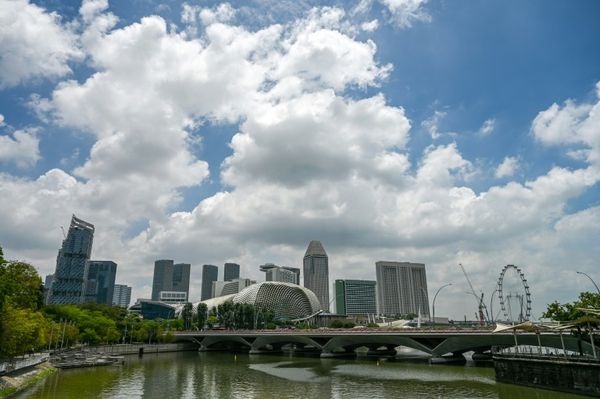The Democrats’ long-sought tax and energy legislation finally passed by the Senate is a critical breakthrough in America’s effort to meaningfully reduce greenhouse-gas emissions. That’s the good news. More worrisome is what the bill fails to do to limit fugitive methane from oil and gas production.
The legislation would levy fees on producers that fail to plug leaks in drilling operations and pipelines. But this provision contains a dangerous loophole: Any methane leaking from operations that otherwise comply with pending regulations from the Environmental Protection Agency are to be exempt. Unfortunately, the EPA’s proposed rules allow enormous volumes of fugitive methane.
The loophole is especially frustrating because methane is the greenhouse gas most in need of immediate restriction. Stopping leaks and flares of this potent gas from oil and gas fields would, in fact, be the biggest, fastest and cheapest action the U.S. could take to protect the climate — because its effects would kick in almost immediately.
Indeed, they could, over the next five years, keep the U.S. fully on track to meet its pledge to slash emissions in half by 2030. They also would make a big difference in the short-term climate crisis and buy time for further action.
This opportunity — and, conversely, the enormous risk that comes from failing to limit oil and gas methane emissions — has been obscured by poor measurement. So far, the U.S. has failed to assess both the size and the impact of methane leaks. The EPA simply accepts oil and gas company reports on their own methane leaks, and according to these, total emissions amount to only 8.5 million tons. Yet every time outsiders look closely at an oil or gas field, they find far more methane leaking than industry admits. Independent estimates range from 80% higher to double the official figures.
Equally important, every molecule of methane emitted is 85 times as destructive to the climate as one of carbon dioxide — even though it is far less durable. The CO2 emitted in 2020 will linger in the atmosphere at least 300 years, while 2020 methane will break down in just 12 years. During that 12 years, however, it will act like a blowtorch on the atmosphere.
In other words, methane’s impact is greatest now, just as the climate crisis is hitting hardest. EPA’s charts show oil and gas methane having an impact equivalent to only 212 million tons of CO2, about 3% of total greenhouse gases. But combining the real volume of leaking methane with its powerful warming effects over the next decade, fugitive methane creates six times as much climate disruption — the equivalent of more than 1,200 tons of CO2, or one-fifth of all U.S. greenhouse gases.
The good news is that it’s easy to drastically limit methane emissions from oil and gas operations. Some profitable producers release 90% less than their competitors do. About half of current fugitive methane could be captured and sold as pipeline gas at no net cost. More than 75% could be captured at nominal cost. One piece of oil patch equipment — the pneumatic controller — leaks 61% of the reported methane, even though zero-emission controllers exist and are required in several states.
While preventing fugitive methane costs little money, it does take time. And the wildcatter segment of the oil industry is averse to spending that time, whether in building a pipeline for collecting the gas or laying power lines to use cleaner electric drilling kits. Some states indulge this resistance.
In the Texas Permian Basin, for example, the Texas Railroad Commission takes a lax approach to limiting methane. Next door in New Mexico, where the industry is better regulated, the Permian releases only a third as much climate pollution from oil and gas production as Texas does. Closing methane leaks from the Texas Permian, by itself, would cut short-term U.S. climate pollution by about 10%.
Some of the bigger U.S. oil producers — BP, Chevron and ExxonMobil — might quietly favor tough Biden methane-capture rules, to prevent their more reckless competitors from gaining market advantage.
National regulation is needed, and President Joe Biden has fought hard for it. But the EPA’s current proposal has problems. Depleted wells that no longer produce significant oil would be exempt from monitoring — even though, cumulatively, they may leak half of total oil field methane in the U.S.. What’s worse, the rules would allow oil producers to vent or flare any amount of gas from wells that lack access to pipelines. The EPA should establish rules comprehensive enough to reduce oil and gas methane leaks by 75% within five years, not 10. Flaring and venting should be banned; all gas from oil wells should be captured; and wells that no longer produce much oil or gas should be properly shut down.
By curbing methane leaks from oil and gas, the Biden administration could, in five years, cut the U.S. energy sector’s climate footprint by 15%. That could mean fewer floods in Kentucky, fires in California, hurricanes in Texas and heat waves in Arizona — not in 2100, but over the next two decades. Methane pollution needs more regulation, and fast.
____
ABOUT THE WRITER
Carl Pope is a former chairman of the Sierra Club and the coauthor, with Michael R. Bloomberg, of "Climate of Hope."
This column does not necessarily reflect the opinion of the editorial board or Bloomberg LP and its owners.







